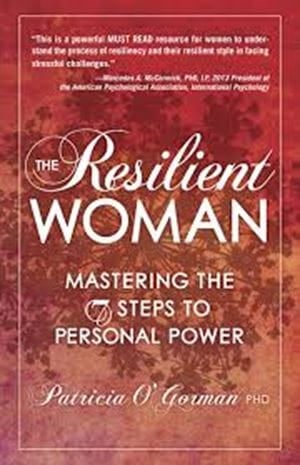
The Resilient Woman: Mastering the 7 Steps to Personal Power
pp. 4-6
The Conscious Use of Resilience
The fact is that most of us underestimate the degree of strength and flexibility our lives require on a daily basis. We focus instead on our unfinished tasks, pushing ourselves harder while we simultaneously ignore our self-nurturing. To do what seems like the impossible task of taking care of ourselves, we need to be reminded of our own power from time to time, as my own mother—a competitive ballroom dancer in her golden years—did when she told me on more than one occasion that while Fred Astaire received top billing, “Ginger Rogers did everything that Fred Astaire did. And she just did it backwards and in high heels, and slimmed down in the process.” So even though we are most successful in life when we can achieve a balance between our two vital sources of strength—self and other—achieving this can be quite a challenge. It requires us to use all of who we are and dares us to be in touch with our own desires and our own needs.
How to do this?
The Resilient Woman: Mastering the 7 Steps to Personal Power offers you a comprehensive, practical, step-by-step guide to understanding your own resilience and to consciously expanding its role in everyday life through learning how to combat those girly thoughts. This is a process you can do at your own pace and will not take a lot of time that you don’t have. I will help you learn to think differently about yourself, begin to listen to your needs and wants, start to nurture yourself, and learn very simple experiments to try out different ways of taking care of what you need within yourself and with others. I’ve done this through creating simple assessments and seven steps designed for daily use. The steps in Part Two are designed to bring out the best in you—your resilience—by helping you develop strategies to build your resilience consciously. These include having you consider solutions that you used in the past that could be dusted off and used today, considering yourself in a new light as a resilient woman by challenging some of your existing attitudes about yourself, those girly thoughts, and learning some new skills.
I will do this through:
• Helping you use your natural qualities, such as curiosity and creativity
• Showing you how to make space within your life to perfect the art of really listening to yourself instead of all the external messages that bombard you
• Guiding you in setting helpful boundaries
• Encouraging you to free yourself to take risks while thinking positively
• Helping you learn how to develop the gift of gratitude in your life, and experiencing the joy that comes from living in the safety of the life you have created. You will find that your resilience can be built and expanded through taking control of your thinking and your actions, which you will be guided in doing by the seven steps provided in the third part of this book. Of course to do this does require that you consciously challenge those girly thoughts, your less-than-helpful negative inner dialogue, but I will show you how!
Each chapter will guide you in creating your very own Resilience Plan, and through writing a personalized Resilience Journal you will develop a complete set of action steps that are specific to you…..
Your Resilience Journal: Using Your Resilient Voice (p.171 )
Listen to the voice or image in your mind the next time you need to make a decision—whether you want another cookie, need to work late, or want to set a limit with your child.
Pause for a moment. Ask yourself how to proceed and listen to the answers that come. Weigh which one feels right. Perhaps you’ll hear an internal verbal response or feel a drop in tension as you consider a new option. Or perhaps you’ll see yourself doing what you would really like to do. Practice calling on this part of yourself—your resilient voice—on a regular basis.
Consider the following, and journal your responses in your own time. Find out which of these three different avenues you use to perceive your resilient voice:
1. Are you primarily auditory, and you hear the right answer?
2. Are you primarily visual, and you see yourself?
3. Are you primarily kinesthetic, and you literally feel the right answers in your body? Do your dreams or daydreams provide clues? For many people, resilience speaks through their unconscious, which is why making this process conscious is such a priority. Continue to cultivate your resilience by using it frequently. Use it throughout your day. Ask yourself what you need, and see which answer is the right one. Play with this, and enjoy getting to know you!

